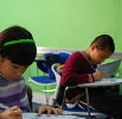Abstract
Merton (1968) identifies manifest functions as the intended and expected functions of an institution while latent functions are unrecognized and therefore unintended outcomes of social processes. For example, while we all agree one manifest function of higher education is obtaining a degree, a latent function can be the interactions of young people that...Download this resource to see full details. Download this resource to see full details.
Details
- Subject Area(s):
- Stratification/Mobility
- Resource Type(s):
- Class Activity
- Class Level(s):
- Any Level
- Class Size(s):
- Any
Usage Notes
In my experience, this assignment has been most appropriate for Social Inequality courses where various institutions that serve a socialization function and reinforce many of the inequalities embedded in dominant society are discussed (education, work, family, media, and so on). I chose education specifically because of its role as a dominant socializing...Download this resource to see full details. Download this resource to see full details.
Learning Goals and Assessments
Learning Goal(s):
- Apply the concepts of manifest and latent functions to a socializing institution students are very familiar with.
- Consider how enculturation produces different outcomes and opportunities for individuals from different standpoints.
- Reflect on the extent to which differential outcomes can produce barriers to various future opportunities.
Goal Assessment(s):
- Students produce a clear, concise, and complete written record of the group discussion on the provided handout.
- As a class, each group should offer a brief oral presentation that includes identification of manifest and latent functions as well as a critical assessment of differential outcomes.
- Each student will produce a written reflection that draws on course readings and advances the discussion of outcomes to larger issues of social mobility, access to resources, or stratification.
When using resources from TRAILS, please include a clear and legible citation.


